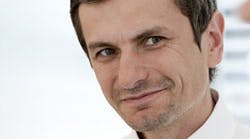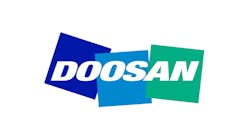Will Additive Manufacturing Put Milling Machines Out of Work?
If you’re building a house, you’re hardly going to mill rooms, doors and windows out of a huge block of stone. On the other hand, when it comes to machining housings this is the normal approach – for the time being. EMO Hannover 2011 will take place in September, and takes as its motto “More than machine tools,” but insightful machine tool manufacturers will keep an open mind and a watchful eye for emerging developments in additive manufacturing. That is the catch-all term for rapid manufacturing processes like laser processing, electron beam melting, aerosol jetting, inkjet production, semi-solid fabrication, and similar efforts to form products from 3D data. Andrzej Grzesiak, who heads the Fraunhofer Additive Manufacturing Alliance at the Stuttgart-based Fraunhofer Institute for Production Technology and Automation (IPA) helpfully answered our questions about this emerging landscape of manufacturing technology.
What advantages does additive manufacturing offer for producing complex geometries?
Grzesiak: The salient advantage of layer-forming processes is that any conceivable shape that can be created in a 3D CAD program can actually be produced. There are no restrictions in terms of manufacturing transparent or hollow structures. Nor are there any problems with complex geometries and freeform designs.
Additive manufacturing was at first reserved for making models and prototypes: Where are the practical applications in terms of series production?
Grzesiak: We’re only at the very beginning of the developments. New, improved materials and more stable processes are being developed. Nonetheless, we’re already seeing the first, best-case applications with implants, dental technology, and light automation components. Individualized mass production is up and running almost everywhere in these fields. We’re also seeing new applications in aircraft manufacturing, where metal-based lightweight construction using titanium is set to play a particularly large role.
Are there any limits to creative design freedom? Will traditional design guidelines be rendered obsolete?
Grzesiak: Direct, fast manufacturing by means of additive processes, thanks to its well-nigh limitless freedom in terms of shape and design, enables customized, optimized products to be created. Moreover, by virtue of the geometric freedom provided, and the high elasticity of the material involved, it is possible to manufacture snap-fit connections, complicated form-locking elements, spring-force connections and geometries like leaf springs or helical springs. This means fewer parts have to be mounted or connected with tools. This is something design engineers first have to learn.
Where do you see the main application categories for additive manufacturing: Medical Technology? Mechanical Engineering? Tool-and-die production? Aerospace?
Grzesiak: All these fields are of interest. We draw distinctions here not by sectors, but by applications. In all of them, individualized mass production for specialized parts and components can be achieved at affordable prices.
Are there any differences in the user target groups, i.e., between micro-systems engineering and forging-die production, for example?
Grzesiak: Yes, simply because quite different requirements are posed for the engineering and the materials involved. Quite different technologies will be used here, too. It’s important not to introduce additive-manufacturing techniques everywhere, but first to comprehend what the customers actually need. This will enable additional markets like biotechnology to be successfully penetrated as well.
Which of the various methods for additive manufacturing has the best prospects for broad-based industrial adoption in the long term?
Grzesiak: You shouldn’t compare the various technologies directly. Depending on the particular application being planned, you have to choose the appropriate technology. This is also important for newcomers: first the application, then the technology. Nowadays, the laser systems are being used especially in the field of end-part production. In future, printing technology systems will be used more and more, particularly in micro-systems engineering and biotechnology. There’s going to be a lot happening here in the next three to five years.
What role does additive manufacturing play nowadays in automated process chains?
Grzesiak: None, so far, although the integration of new manufacturing methods into industrial process chains offers far-reaching options for optimizing production operations, due to the lack of organization and the stand-alone machines the implementation status is as yet not very far advanced. By reason of minimal batch sizes and the elimination of assembly processes thanks to complete manufacture, there is concomitant potential for streamlining, though of course this has to be supported by the correct organization. Additive manufacturing enables certain problems to be solved in conventional production structures, though the integration of these systems in the triangular matrix of 1) time, 2) costs, and 3) quality is being rendered rather difficult by the current lack of comprehensive production models.
How about the reproducibility of the processes involved, about quality assurance in mass production? Are there any dependable methods of simulation?
Grzesiak: The reproducibility of the processes involved is a principal focus of ongoing development work, and will have to be achieved over the next few years. The subject of quality is dealt with in VDI Guideline 3405, entitled “Additive manufacturing processes.” There are numerous research projects running at the moment, as well as in-house development work at the equipment producers, who then address the issue.
Can additive manufacturing entirely replace conventional processes?
Grzesiak: No, nor should this be the goal of development work. The right approach is to define the correct application categories and to replace existing conventional technologies only where commercial and technical advantages are to be gained. The technologies should co-exist and complement each other to optimal effect.
So there’s no risk that additive manufacturing will in the long-term put conventional machine tools out of work?
Grzesiak: One should never say never, but I don’t think so. Both technologies simply have their own advantages that can be selectively utilized. There are, however, certain fields, such as dental prosthetics, in which the machine tool will in my estimation be replaced over the next few years.
Against this background, what do you expect from the upcoming EMO Hannover 2011?
Grzesiak: The major machine tool producers are showing progressively more interest in additive manufacturing. In the final analysis, every machine that processes and produces workpieces is a manufacturing machine. Whether this is to be done with a laser or a milling head will in the future be a matter of choice. Perhaps the first developments will already be on show at the EMO Hannover 2011. I am confident that if it doesn’t happen this year, it definitely will happen soon afterwards.
EMO Hannover 2011, the biennial trade event for machine tools and metalworking technology will take place September 19-24 in Hanover, Germany. Its core attractions will concern cutting and forming machine tools, production systems, high-precision tools, automated material flows, computer technology, industrial electronics and accessories, but the planners also promise presentations on a range of topical issues and emerging technologies, and subjects that concern a range of manufacturing sectors.
Walter Frick, a freelance journalist interviewed Andrzej Grzesiak and drafted this report. You may contact Grzesiak by email at [email protected].
